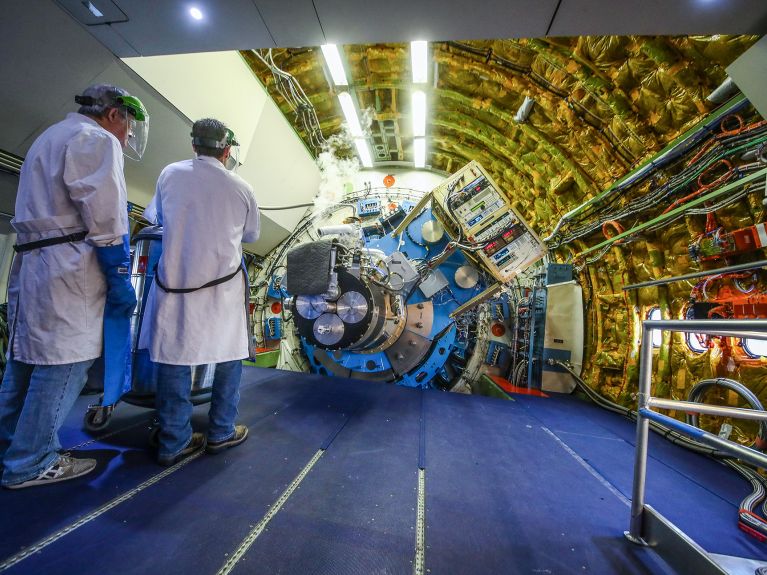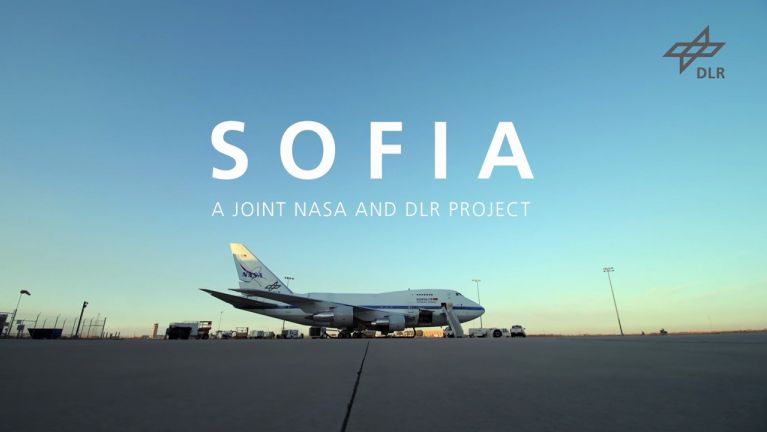Tomatoes in space
Vegetable cultivation for the journey to Mars and an infrared telescope in an aircraft: A look at the most exciting German aerospace projects

Vegetables for the Moon and Mars
Astronauts need to eat healthy foods during their long-term missions to the Moon and Mars. That’s why space agencies are experimenting with vegetable cultivation in space. Take for example, the Eu:CROPIS mission of the German Aerospace Center (DLR) which grows tomatoes in two fully automated mini-greenhouses inside a satellite the size of a refrigerator. One of the greenhouses simulates the conditions on the Moon, the other those on Mars. One main component is a small filter column fitted with lava stones. Bacteria settle in the porous surface of the stones. During the mission synthetic urine and carbon dioxide are added to the bio-filter. They are used in the production of plant nutrients and simulate the breathing of the astronauts as well as the use of human waste. Also included are single-celled algae which produce oxygen and detoxify various substances. They keep the system healthy.
The flying observatory
Some astronomical phenomena, such as the birth of stars, can be best observed within the infrared range of light. But infrared light is blocked by the Earth’s atmosphere. That is why scientists are able to receive it very well in space with an antenna. Since 2013 the USA and Germany have been involved in the joint project SOFIA, the Stratospheric Observatory for Infrared Astronomy. Because satellites are inflexible, the project uses a specially modified aircraft. The converted Boeing 747SP aircraft was once a passenger jumbo jet. Mounted in the rear of the aircraft is a 2.7-metre infrared telescope developed in Germany. It is sealed off in a pressure chamber behind a side door in the aircraft that can be opened during flight. The one-time passenger cabin contains technical equipment for up to 15 scientists. SOFIA flies at a height of 12 to 15 kilometres in the stratosphere, leaving 99 per cent of the interfering water vapour in the air below. This enables scientist to observe the cosmos even better.
Dieses YouTube-Video kann in einem neuen Tab abgespielt werden
YouTube öffnenThird party content
We use YouTube to embed content that may collect data about your activity. Please review the details and accept the service to see this content.
Open consent formThe new space launcher
The European Ariane 5 launch system is becoming outdated, and at launching costs of 19,000 Dollars per kilo it is relatively expensive. That is why it is due to be replaced by Ariane 6 from mid-2020. Although it will only be able to propel half the previous payload into space, it will be less costly at 11,000 Dollars per kilo. And by 2030 the price is estimated to fall to 5,000 Dollars per kilo. German engineers are substantially involved in Ariane 6. For instance, the upper stage of the rocket is being built in Bremen. This stage of the rocket contains the engine that will burn after the core stage has done its job. The upper stage can burn several times to position the payload of Ariane 6, for example two satellites, in the desired orbits at different heights in space.
You would like to receive regular information about Germany? Subscribe here:


